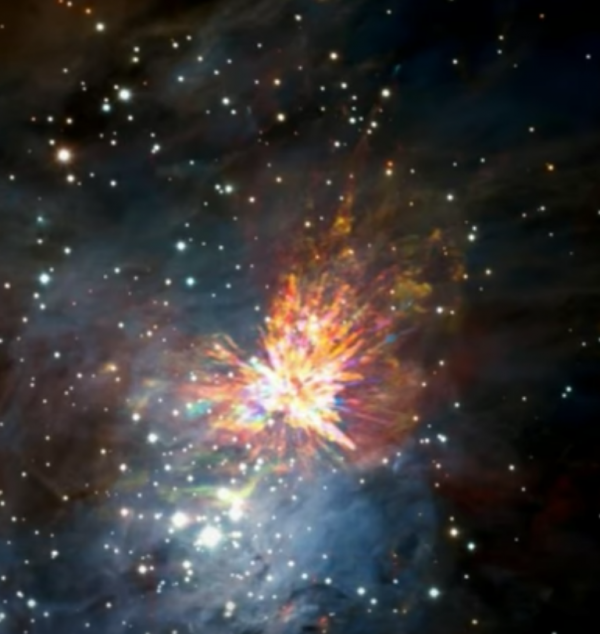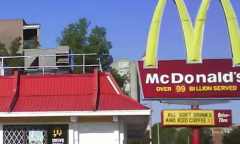By Vishal Goel, | April 11, 2017

star formation can be a violent process too
Stellar explosions are usually associated with supernovae (the explosive death of stars). However, Chile-based telescopes have made observations that provide first ever insights into the explosive birth of stars, astronomers said. The 500-year-old explosion was captured from firework-like debris resulting from a possible collision of stellar gases which shows that star formation can be a violent process too.
Like Us on Facebook
Astronomers using the Atacama Large Millimeter/submillimeter Array (ALMA) examined the widely scattered debris from the explosive event, gaining new insights into the fierce relationship among sibling stars. Shortly after beginning to form around 100,000 years ago, several protostars in the Orion Molecular Cloud 1 (OMC-1), about 1,500 light-years from Earth just behind the Orion Nebula, latched onto each other gravitationally and gradually drew closer.
Eventually, two of the stars either grazed each other or collided, thus, triggering a powerful eruption that launched other nearby protostars and hundreds of giant streamers of dust and gas into interstellar space at speeds more than 150 kilometers per second. The energy released by this cataclysmic interaction released was as much as our Sun emits over the course of 10 million years.
The remains of this spectacular explosion are visible from our planet today. As told by John Bally, with the University of Colorado and lead author on a paper published in the Astrophysical Journal, this once calm stellar nursery is a cosmic version of a fireworks display, with giant streamers rocketing off in all directions.
Groups of stars, like those in OMC-1, are born when a cloud of gas hundreds of times more massive than our Sun, begins to collapse under its own gravity. As a result, protostars form in the densest regions and begin to drift about randomly. Time, then, can dampen this random motion allowing some of the stars to fall toward a common center of gravity, usually dominated by a particularly large protostar.
If these stars draw too close to each other before drifting away into the galaxy, this can result into violent interactions. According to the researchers, such explosions are relatively short lived, with the remnants lasting only centuries.
-
Use of Coronavirus Pandemic Drones Raises Privacy Concerns: Drones Spread Fear, Local Officials Say

-
Coronavirus Hampers The Delivery Of Lockheed Martin F-35 Stealth Fighters For 2020

-
Instagram Speeds Up Plans to Add Account Memorialization Feature Due to COVID-19 Deaths

-
NASA: Perseverance Plans to Bring 'Mars Rock' to Earth in 2031

-
600 Dead And 3,000 In The Hospital as Iranians Believed Drinking High-Concentrations of Alcohol Can Cure The Coronavirus

-
600 Dead And 3,000 In The Hospital as Iranians Believed Drinking High-Concentrations of Alcohol Can Cure The Coronavirus

-
COVID-19: Doctors, Nurses Use Virtual Reality to Learn New Skills in Treating Coronavirus Patients











